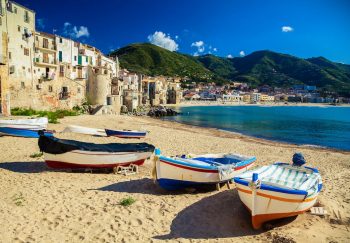Today, the Sicilian Baroque is our last legacy from the island’s noble class. It leaves a lasting impression on our hearts.
Stone buildings are visible in the sun, with light playing with niches and sinuous columns rising in sky… The Sicilian Baroque creates a unique mix of earth and sky. The white background and intense ocher of the palaces and churches make for a fascinating combination. It is a unique experience to walk through the streets of Noto , MODICA and Ragusa, and be able to see the magnificent and detailed shapes of the great Sicilian Baroque.
The Baroque style is a treasure trove on this island. Surprisingly, all of the beauty found in this area is due to a disaster: the 1693 earthquake. Noto was destroyed by the earthquake, which also severely damaged Catania Ragusa Modica Ispica Militello and Catania Ragusa Modica. This disaster led to an incredible work of reconstruction under Duke of Camastra. New cities were constructed, as well as urban facilities, extraordinary scenography and lavish palaces and churches. New life was born where the earth had swallowed the life; new monsters were shown on facades to remind us of what lies beneath the earth.
The baroque style of today is often restricted to the beautiful Val di Noto, which characterizes Sicily’s architectural styles. This corner of Sicily is where you can see the chiaroscuro effect created by the sun’s warmth on the facades baroque buildings. We will be seeing the Cathedral, the Church of St. Borromeo al Corso and the Nicolaci Di Villadorata palace in Noto; in Ragusa the Church of St. Giorgio, the Zacco Palace and the Cathedral of St. Giovanni Battista; and in Catania the Cathedral and the Plaza dominated by the Seminary of the Clerics and the Palace of the Elephants; and in Scicli the Palazzo Benevento and the Cathedral of St. Giorgio with its incredible staircase (and many of the Cathedral of St. Gioric and rich and full-bodied, rhythmic and elusive; and rich and full-bodied, strong and rigorous and rational, elusive, as well as well as well as well as well as well as well as well-bodied and rich and a.
The elegant balconies of palaces feature Putti, chubby nude children sometimes winged, masks, and grotesque face designs. Line-mixed and geometric shapes can be seen on the curving facades of churches. Twisted columns rise so gracefully, and bell towers look like precious jewelry. The interior is equally impressive: marble inlays and moldings, mixed marble, sculptures, moldings, frescos, and frescos are all found in the cathedral naves.
Let’s visit Mazara del Vallo near Trapani and see the Church of San Francesco. It’s a stunning church that was built in Norman Arabic style and then converted into Baroque style. Let’s take a look at it in all its glory thanks to the restoration that was started in 1977 in order to repair the damage caused by the earthquake of Belice (1968).
Palermo was the true interpreter of the most elegant and refined baroque. He was a decorator and sculptor who gained fame for his molds. He also developed the groundbreaking allustratura technique, which he shared with his brother Giuseppe. The Oratorio di Santa Cita, the Oratorio del Rosario and the Church of San Domenico are some of his most important works.
Giuseppe and Giacomo Serpotta, the brothers, decorated the Cappella Palatina (“Palace Chapel”) at Castello Ventimiglia (the Castel in Castelbuono).
Cappella Palatina, Castelbuono – ph. Per – Erik Skramstad/











